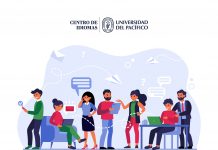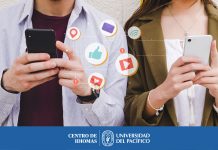How many times have you heard these expressions from your students?
- It has been over a year, and I already forgot what I learned.
- I have good grammar knowledge, but I do not understand much of a conversation.
- I studied English for two and a half years and cannot speak fluently.
- I do not like the English course because I find it boring.
How can teachers prevent receiving negative feedback? And what traits define a proficient English teacher? the common quality among them is their ability to create memorable lessons.
Forty years ago, Steven Krashen made a crucial distinction between acquisition and learning, emphasizing that the context in which they take place is what sets them apart. Although textbooks are a primary source of learning in a classroom, true language acquisition happens through immersive and natural exposure, like when a child learns their native language. Understanding the distinction between acquisition and learning is crucial because while learned knowledge may be forgotten, acquired knowledge endures. Our lessons then must be memorable enough to promote language acquisition in our students. When this acquisition is achieved, it will hardly be forgotten.
When teachers prioritize language acquisition activities over formal learning ones, they can create an impactful classroom experience. By prioritizing language acquisition, teachers can help students develop the skills and confidence they need to effectively communicate in the target language, leading to a more engaging learning experience.
To make our lessons truly memorable, one effective approach is to bring the real world into the classroom. Recent research emphasizes the effectiveness of using audio and video in language instruction over non-authentic sources, regardless of their level of up-to-dateness. Let us then set aside traditional textbook activities a bit and expose our students to real interactions between native speakers of the language as nothing impacts language learning more than exposure to the language through non-graduated, non-adapted content from the real world.
One of the contributions of technology to language teaching is that it allows us to use videos, audio, reading materials, etc. that students would come across in an English-speaking country. This natural exposure to the language can take place both inside and outside the class through the design of asynchronous activities.
Indeed, one of the main lessons learned from remote teaching is the design and effective use of asynchronous activities as a complement to class work. However, it is crucial to ensure that these activities prioritize natural exposure to the English language, rather than focusing solely on reviewing or practicing grammatical structures and vocabulary.
What are the advantages of asynchronous activities aimed at language acquisition?
- They arouse the students’ taste for learning the language since they feel that the contents are “real”. Additionally, authentic materials provide opportunities for students to learn about other cultures, including customs, lifestyles, traditions, and non-verbal language.
- Through natural exposure to the language, students can develop communicative strategies that enhance their oral expression skills
- Students are exposed to a variety of accents which strengthens their listening comprehension and pronunciation.
- They are very motivating activities, especially when it comes to movies or television series in English.
- Like any asynchronous activity, students manage their time and rhythm of exposure to the language.
Incorporating real-world materials into asynchronous activities not only stimulates students’ interest and motivation but also enhances the memorability of lessons. Who has not happened to learn a phrase from a conversation with native speakers, from the feedback we got from them, or even from a movie? That is hardly forgotten.











Stephen Krashen’s theory of language acquisition has proven to be a great breakthrough in linguistics. The most useful thing we can do with our students in the classroom is to expose them to large amounts of comprehensible input in a relaxed setting, which aids them in acquiring the language naturally, rather than learning it consciously. We could have students learn the target language consciously at a later learning stage for the sake of their writing, for example. Otherwise, if we want our students to be effective at spontaneous communication, comprehensible input is the way.
Thank You!
That is a good article, congratulations.
Comments are closed.